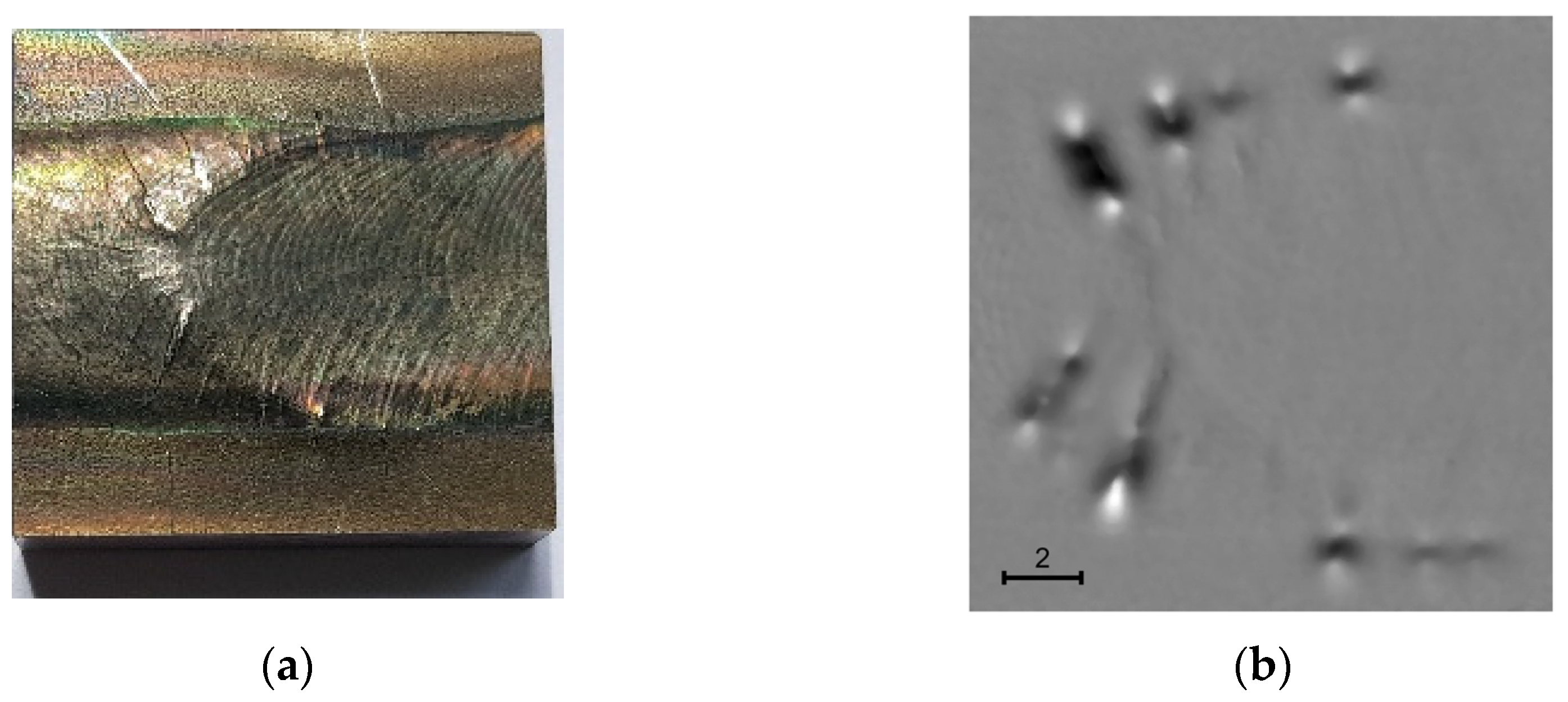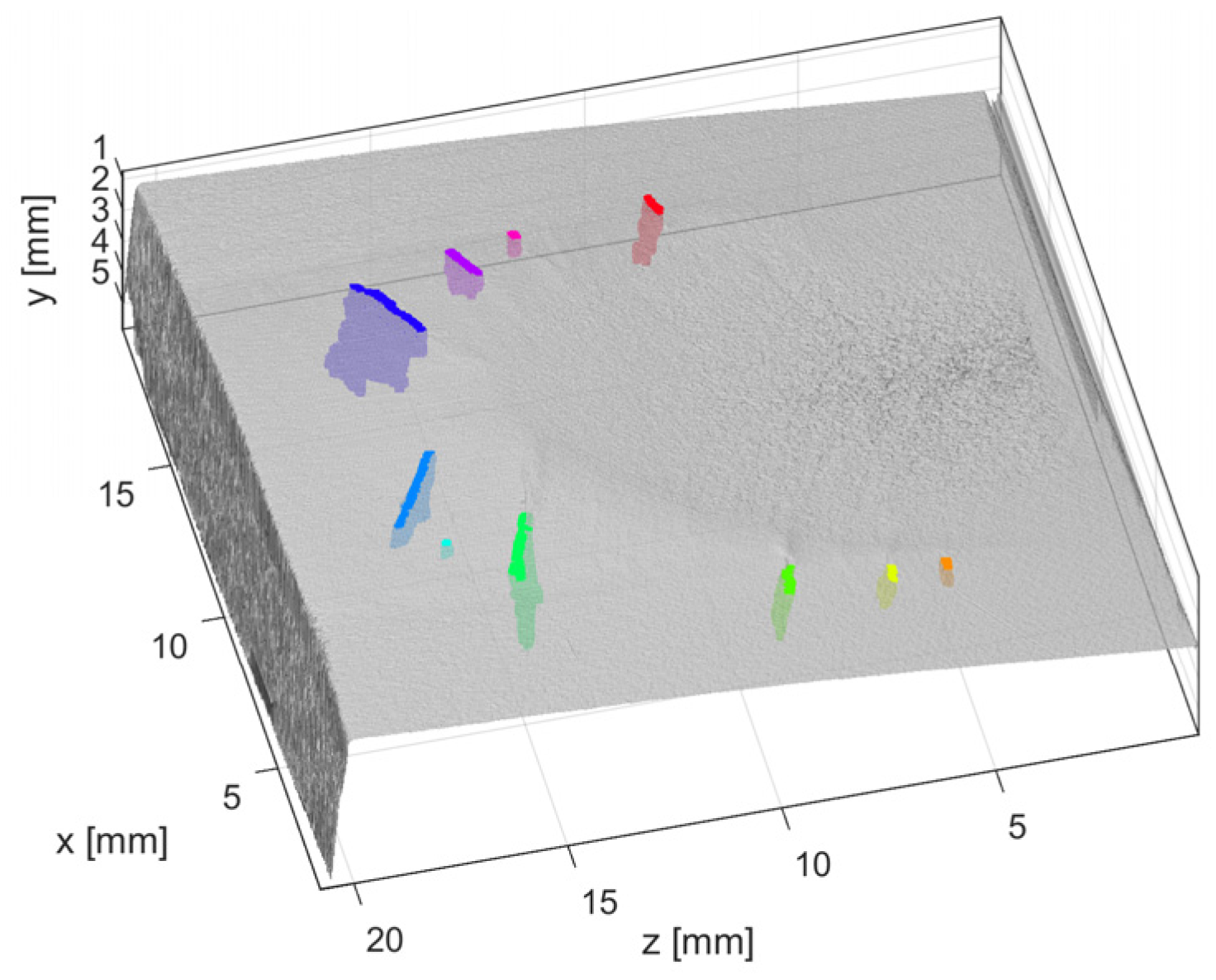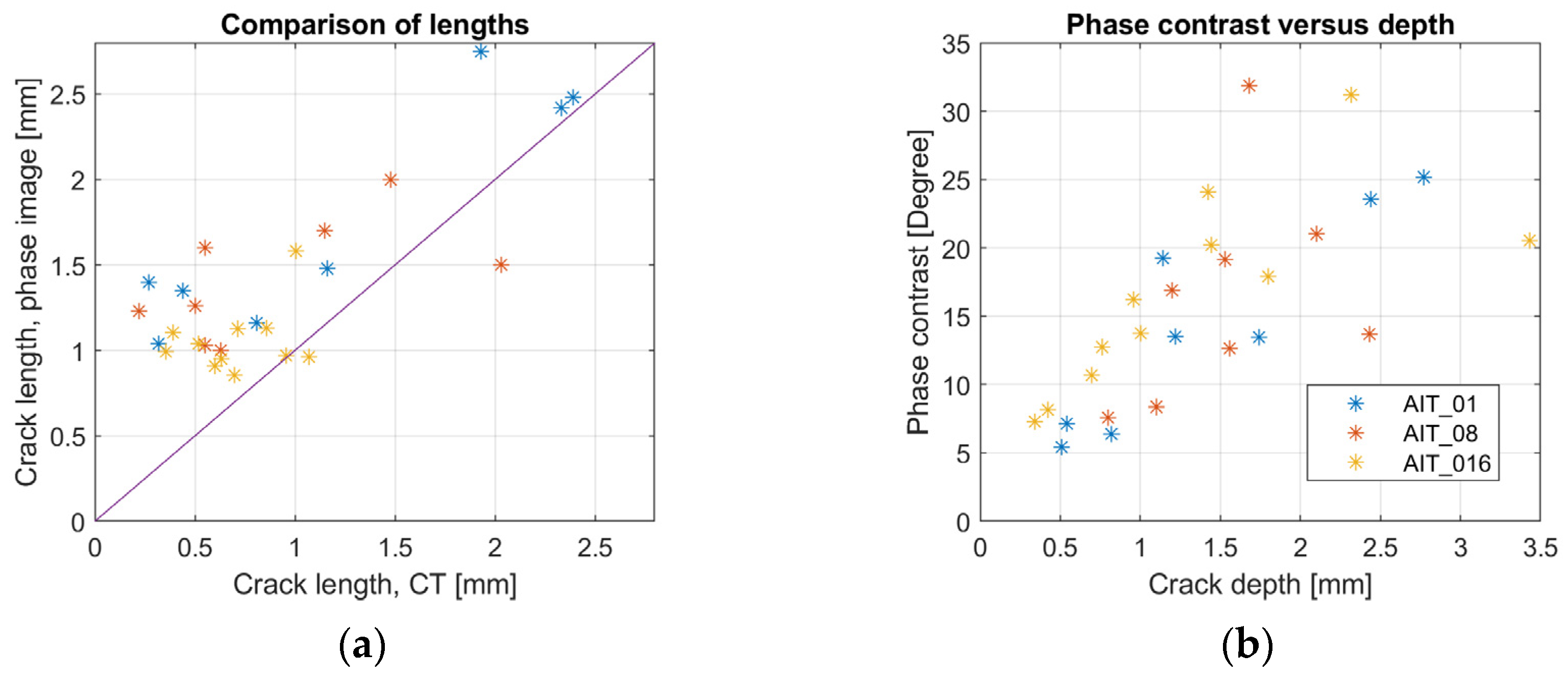Comparison of Inductive Thermography and Computer Tomography Results for Short Surface Cracks †
Abstract
:1. Introduction
2. Finite Element Simulations
3. Inductive Thermography Measurements
4. Computer Tomography Measurements
5. Comparison of Inductive Thermography and CT Results
6. Summary
Funding
Institutional Review Board Statement
Informed Consent Statement
Data Availability Statement
Acknowledgments
Conflicts of Interest
References
- Netzelmann, U.; Walle, G.; Lugin, S.; Ehlen, A.; Bessert, S.; Valeske, B. Induction thermography: Principle, applications and first steps towards standardisation. QIRT J. 2016, 13, 170–181. [Google Scholar] [CrossRef]
- DIN 54183:2018–02. Non-Destructive Testing-Thermographic Testing-Eddy-Current Excited Thermography. Available online: https://www.din.de (accessed on 10 January 2018).
- Srajbr, C. Induction excited thermography in industrial applications”, In Proceedings of the 19th World Conference on Non-Destructive Testing, Munich, Germany, 13–17 June 2016.
- Vrana, J.; Goldammer, M.; Baumann, J.; Rothenfusser, M.; Arnold, W. Mechanism and models for crack detection with induction thermography. AIP Conf Proc. 2008, 1706, 475–482. [Google Scholar] [CrossRef]
- Wilson, J.; Tian, G.Y.; Abidin, I.Z.; Yang, S.; Almond, D. Modelling and evaluation of eddy current stimulated thermography. Nondestruct. Test. Eval. 2010, 25, 205–218. [Google Scholar] [CrossRef]
- Oswald-Tranta, B. Detection and characterisation of short fatigue cracks by inductive thermography. QIRT J. 2021, 19, 239–260. [Google Scholar] [CrossRef]
- Oswald-Tranta, B.; Hackl, A.; Lopez de Uralde Olavera, P.; Gorostegui-Colinas, E.; Rosell, A. Calculating probability of detection of short surface cracks using inductive thermography. QIRT J. 2022. [Google Scholar] [CrossRef]
- Oswald-Tranta, B.; Lopez de Uralde Olavera, P.; Gorostegui-Colinas, E.; Westphal, P. Convolutional neural network for automated surface crack detection in inductive thermography. In Proceedings of the SPIE, Thermosense: Thermal Infrared Applications XLV, Orlando, FL, USA, 30 April–4 May 2023; Volume 12536. [Google Scholar]





Disclaimer/Publisher’s Note: The statements, opinions and data contained in all publications are solely those of the individual author(s) and contributor(s) and not of MDPI and/or the editor(s). MDPI and/or the editor(s) disclaim responsibility for any injury to people or property resulting from any ideas, methods, instructions or products referred to in the content. |
© 2023 by the author. Licensee MDPI, Basel, Switzerland. This article is an open access article distributed under the terms and conditions of the Creative Commons Attribution (CC BY) license (https://creativecommons.org/licenses/by/4.0/).
Share and Cite
Oswald-Tranta, B. Comparison of Inductive Thermography and Computer Tomography Results for Short Surface Cracks. Eng. Proc. 2023, 51, 36. https://doi.org/10.3390/engproc2023051036
Oswald-Tranta B. Comparison of Inductive Thermography and Computer Tomography Results for Short Surface Cracks. Engineering Proceedings. 2023; 51(1):36. https://doi.org/10.3390/engproc2023051036
Chicago/Turabian StyleOswald-Tranta, Beate. 2023. "Comparison of Inductive Thermography and Computer Tomography Results for Short Surface Cracks" Engineering Proceedings 51, no. 1: 36. https://doi.org/10.3390/engproc2023051036





